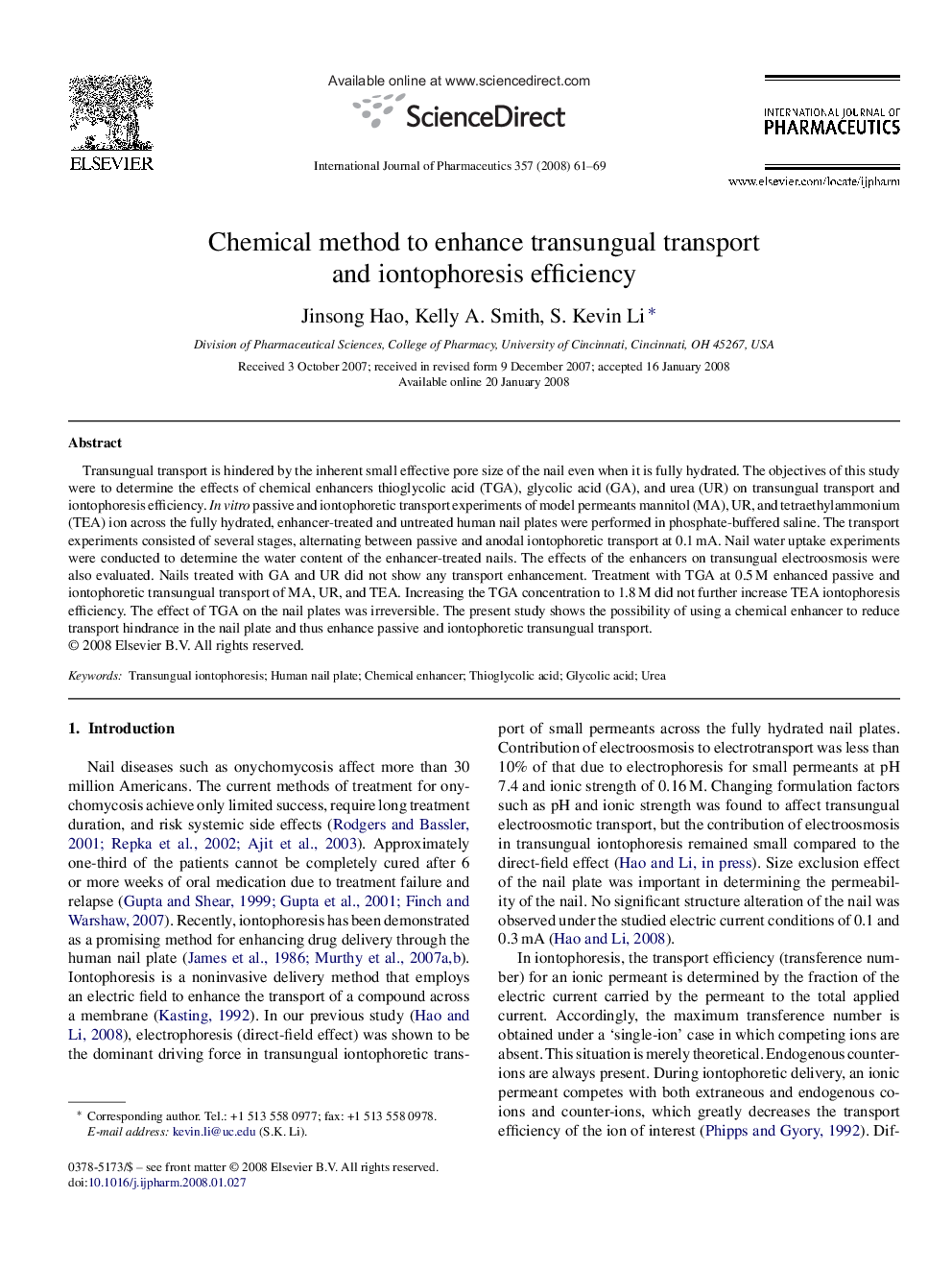| Article ID | Journal | Published Year | Pages | File Type |
|---|---|---|---|---|
| 2505293 | International Journal of Pharmaceutics | 2008 | 9 Pages |
Transungual transport is hindered by the inherent small effective pore size of the nail even when it is fully hydrated. The objectives of this study were to determine the effects of chemical enhancers thioglycolic acid (TGA), glycolic acid (GA), and urea (UR) on transungual transport and iontophoresis efficiency. In vitro passive and iontophoretic transport experiments of model permeants mannitol (MA), UR, and tetraethylammonium (TEA) ion across the fully hydrated, enhancer-treated and untreated human nail plates were performed in phosphate-buffered saline. The transport experiments consisted of several stages, alternating between passive and anodal iontophoretic transport at 0.1 mA. Nail water uptake experiments were conducted to determine the water content of the enhancer-treated nails. The effects of the enhancers on transungual electroosmosis were also evaluated. Nails treated with GA and UR did not show any transport enhancement. Treatment with TGA at 0.5 M enhanced passive and iontophoretic transungual transport of MA, UR, and TEA. Increasing the TGA concentration to 1.8 M did not further increase TEA iontophoresis efficiency. The effect of TGA on the nail plates was irreversible. The present study shows the possibility of using a chemical enhancer to reduce transport hindrance in the nail plate and thus enhance passive and iontophoretic transungual transport.
